The goal of this activity is to explore the number Pi and prove that it is a mathematical constant by making math sun catchers out of perler beads for a fun math + art STEAM activity!
This is a great activity for upper elementary and middle school kids.
Before we started our math sun catcher activity, we discussed the Fibonacci sequence and it’s aesthetic appeal in design.
The Fibonacci series is a mathematical sequence of numbers that happen to represent wide number of relationships in nature such as seashells, galaxies, ferns, sunflowers, flowers, cauliflower, and so many more!
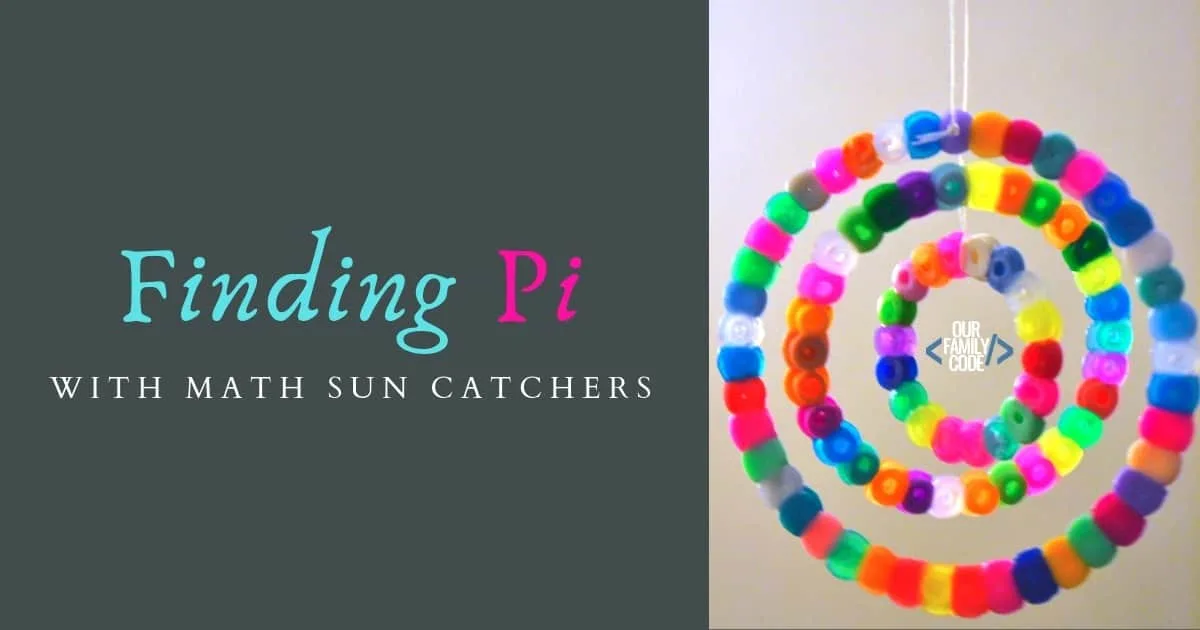
This post contains affiliate links. As an Amazon Associate, Our Family Code earns from qualifying purchases. Please see our Disclosure Policy for more details.
We also made some circle compass art to get comfortable with what a compass is and how to use it.
With our compass art, we also dove into circle measurements and discussed diameter, radius, and circumference of a circle and how to use a compass to measure and draw circles.

Finally, we discussed the number Pi. I explained that if you take the circumference of a circle and divide it by the diameter, it will equal the number Pi.
No matter how small or big the circle is, you will always find the number Pi by solving this equation.
I asked my daughter if she thought that Pi would remain the same if we used perler beads (each is 5mm) to calculate our circle measurements.
She thought about it for a bit before we put this non-standard unit to the test.
You’ll also enjoy: Pi Necklace Coding Unplugged Coding Activity
What is the Fibonacci Sequence?
This is the Fibonacci sequence and the numbers are called Fibonacci numbers. To determine the next number in the sequence, you simply add the previous two numbers together.
The Fibonacci sequence is referred to as the Golden Ratio. Basically, the Golden Ratio occurs when the ratio of two quantities is equal to the ratio of the later of the two quantities to the whole.
3/2= 1.5
5/3=1.6667
8/5=1.6
13/8=1.625
21/13=1.6154
34/21=1.6191
55/34=1.6176
89/55=1.6182
144/89=1.618
The Golden Ratio is Phi, 1.618.
Circle Measurements for Our Math Sun Catcher
We used the Fibonacci sequence for our circle diameters because we thought what better ratio than the golden ratio!
To determine how many beads we needed to use, we looked up the size of our fuse beads and found that the most common size of fuse beads is 5mm.
Since we knew that we were starting with the number 1 (because it wouldn’t really work to start with zero!), we looked up the unit conversion between inches and millimeters in order to determine the number of beads for the diameter of our first circle.
Google told us that 1 inch is equal to 25.4mm. Because we already knew the size of our fuse beads, we determined that we would need 5 beads for the diameter of our first circle (25.4/5=5.08)
Want to know what those green numbers are?
Keep reading to find out about the golden ratio in our math sun catchers!
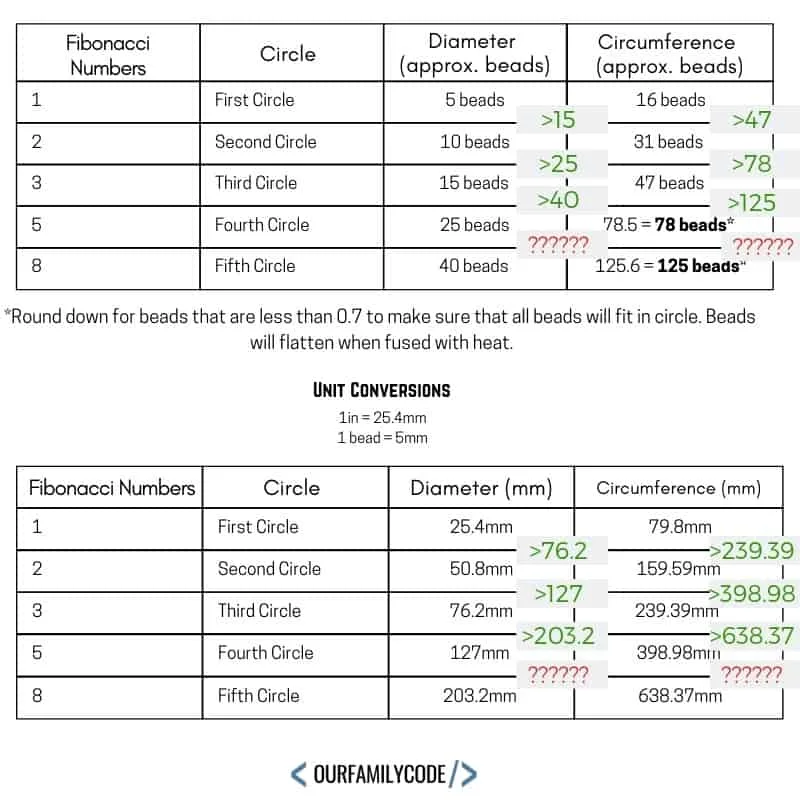
Fibonacci Sequence and the Golden Ratio in Math Sun Catchers
We worked through the calculations for our next two circles. After finishing our calculations, we looked for patterns in our work.
Because we used the Fibonacci numbers for our diameters, we found that all of our calculations increased following the Fibonacci sequence.
To find the next size, you add the previous two sizes. For example, adding the 3-inch diameter circle to the 2-inch diameter circle tells us that our next circle is 5-inch.
See our work below that shows how our numbers increased following this rule. This shows us that not just the Fibonacci numbers follow this sequence! How cool!
We also found Phi (the Golden Ratio) in our calculations. You can calculate Phi by taking a number for example, 9.42in (the circumference of our 3in circle) and dividing it by 6.28in (the circumference of our 2-inch circle).
I’m so glad my daughter geeked out with me about our circle calculations because this was totally my favorite part!
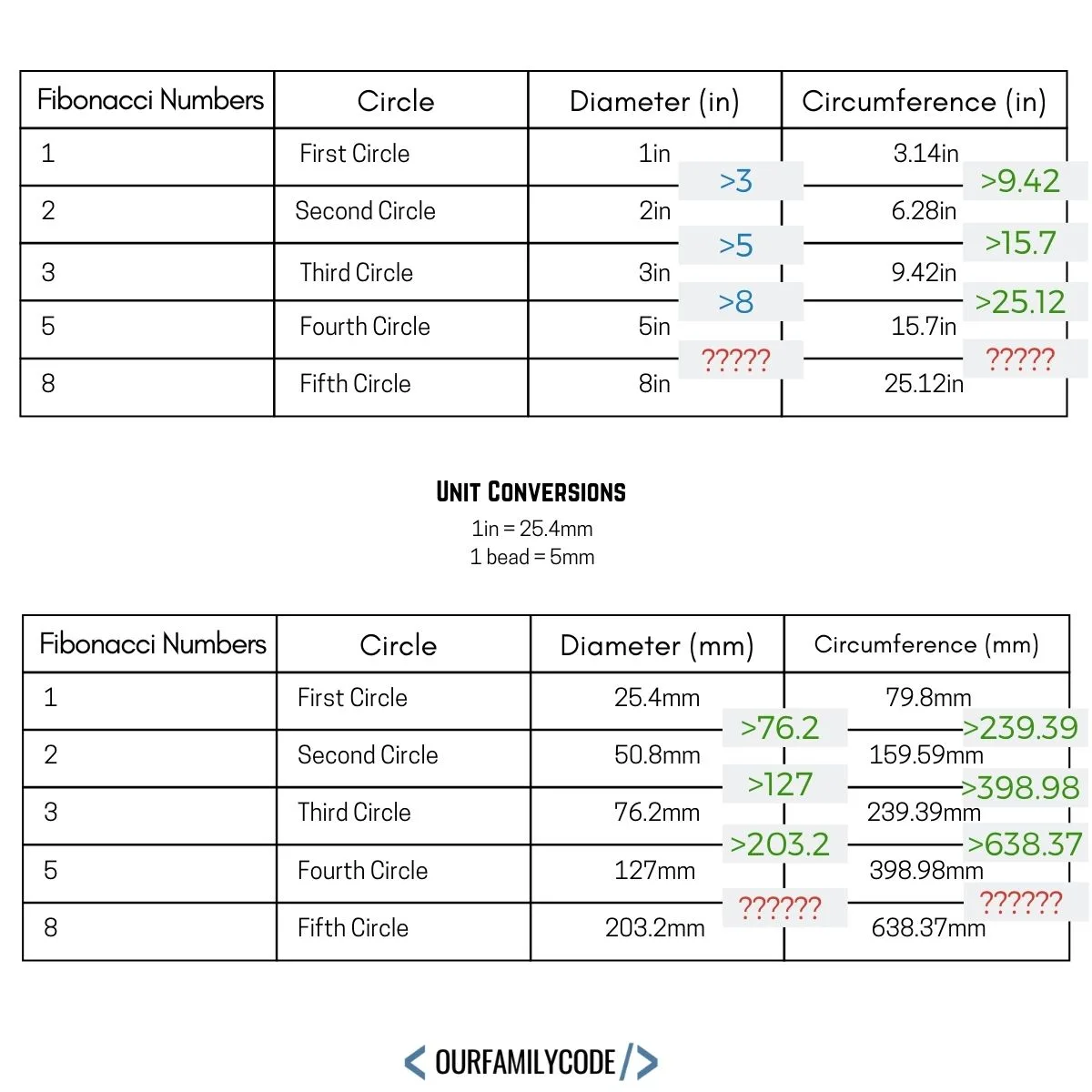
Challenge Question: What would the diameter and circumference be for the next two circles? (Hint: Use the Fibonacci sequence!)
You’ll also enjoy: Pi Skyline: Math + Art + Tech STEAM Activity
Fuse Bead Sun Catcher Materials
- Fuse beads (We used Perler beads for our activity.)
- Compass
- Thread
- Iron
- Wax Paper
- Math Sun Catcher Workbook (Grab this free workbook at the end of this post!)
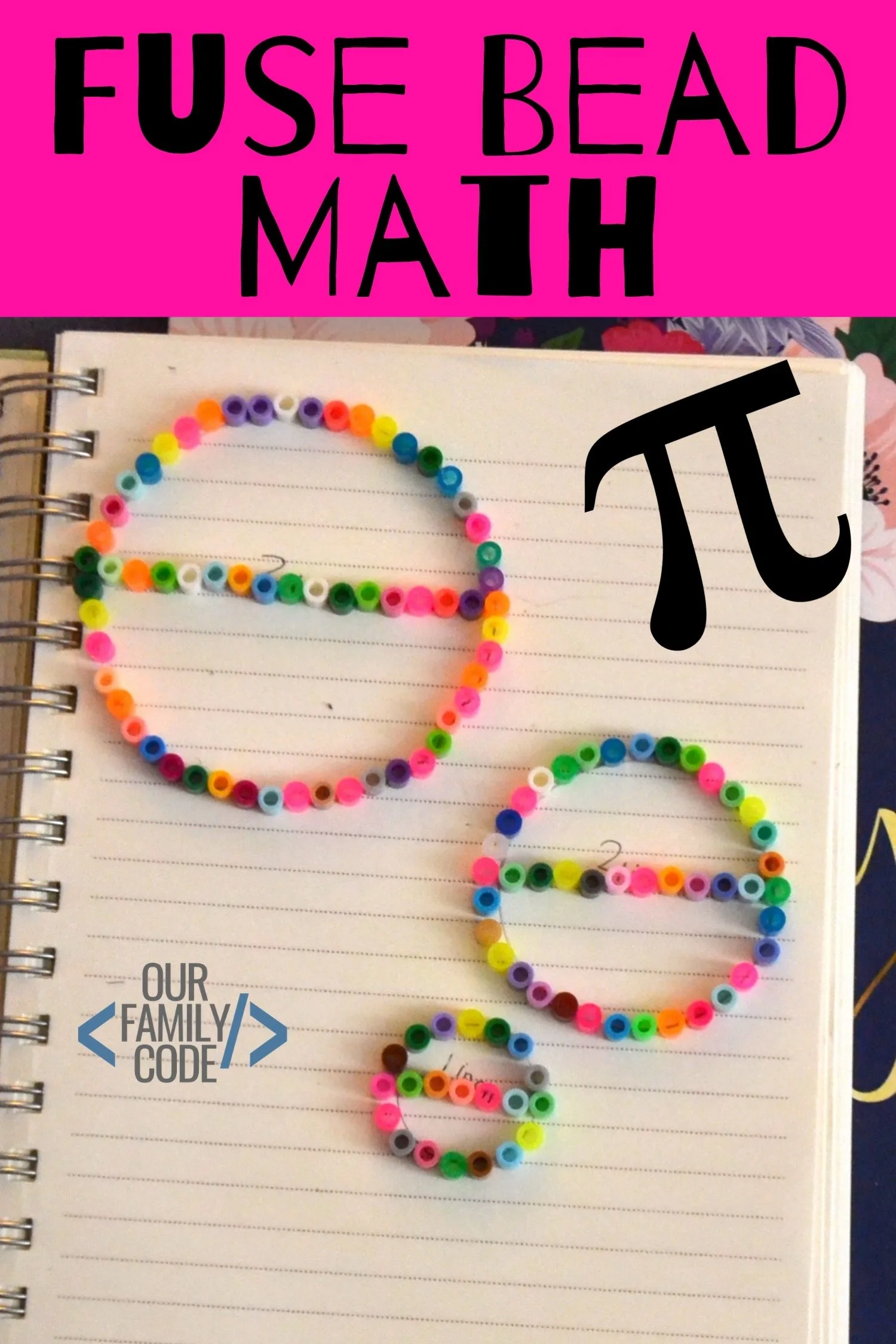
Turn Your Circle Calculations into Math Sun Catchers
Now the fun begins! We started by using a compass to draw our circles on a piece of paper.
We knew the diameter and circumference for our sun catcher circles, so we counted out the beads as we went in order to prove that our calculations worked.
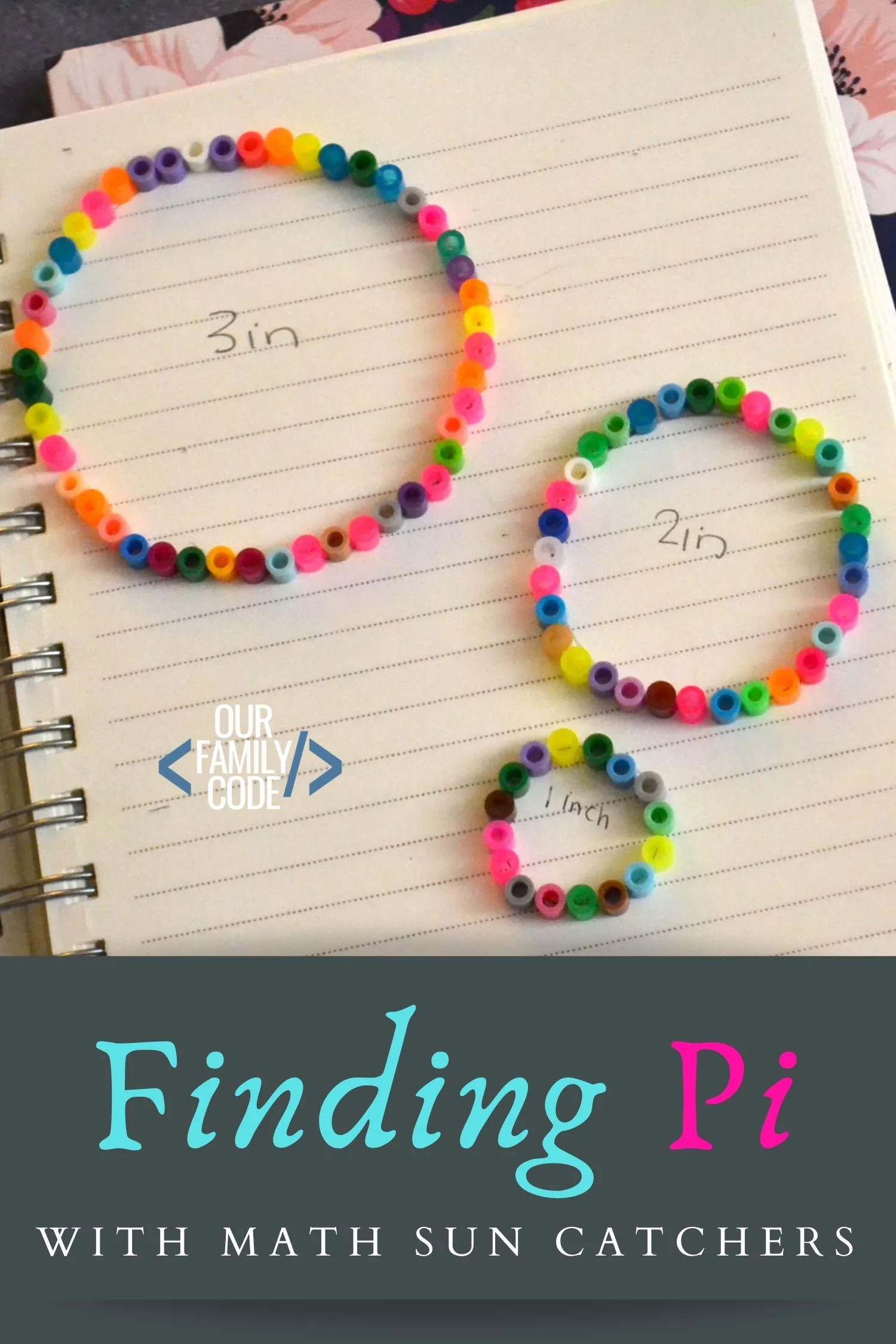
We did not use a pegboard for our designs because the positioning of the pegs was not mathematically correct for our activity.
The trick to fusing the beads without the pegboard is to place the iron straight down on the wax paper and pick back up.
You will knock your beads down if you push the iron around. Lift and press, lift and press for around 30 seconds at a time until your beads are fused together. Then, remove the wax paper carefully and flip the circles over and repeat on the other side.
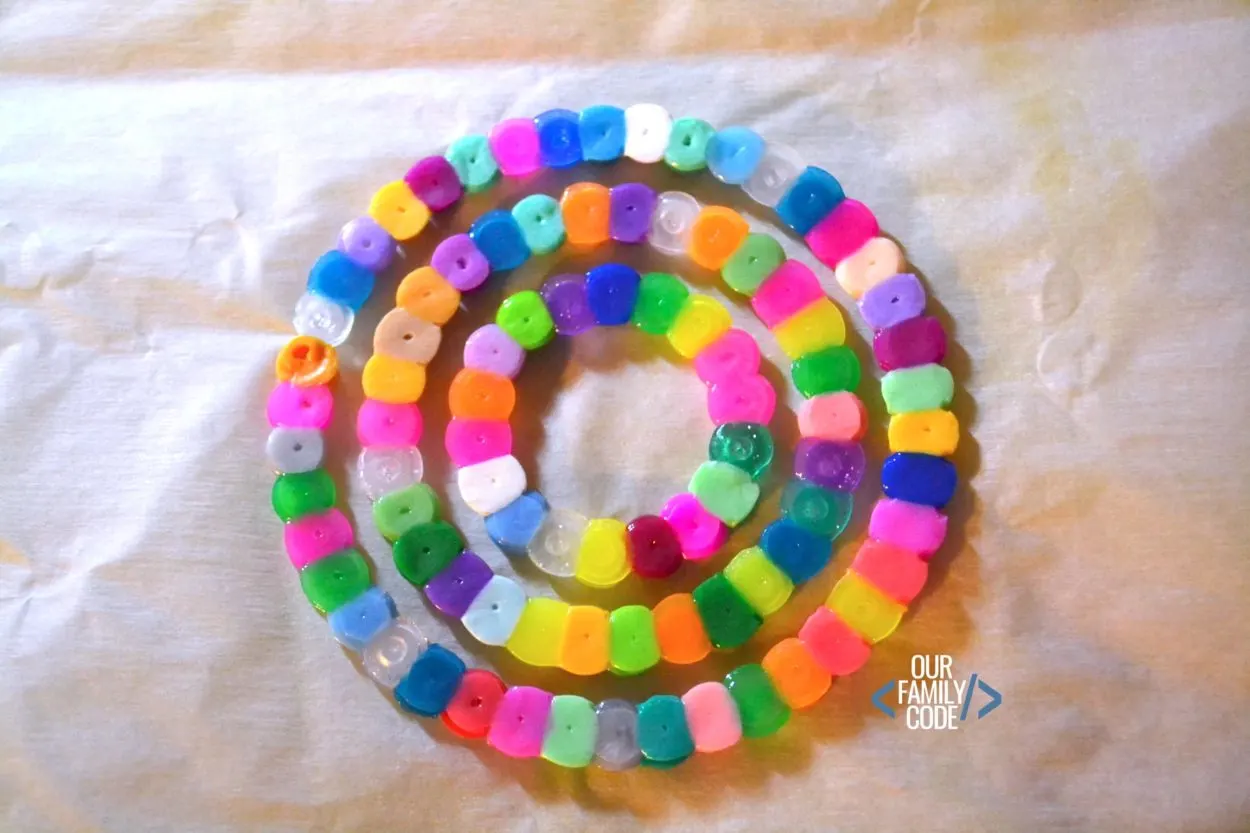
We used a needle and thread to string our circles by looping around and through a few beads until it hung nicely. Make sure to leave enough string to hang your sun catchers.
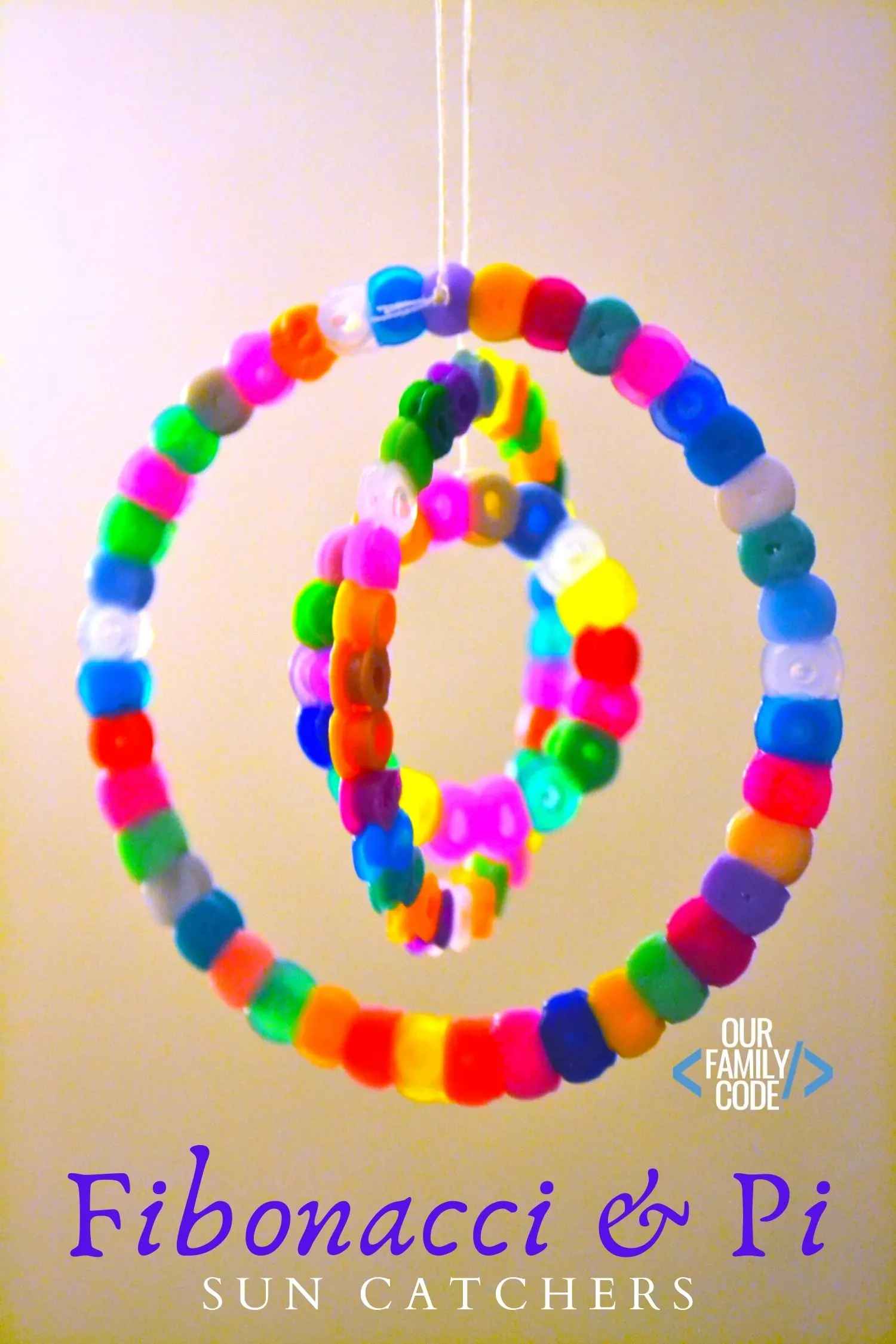
Pi is constant! It doesn’t matter whether we are working with small circles or large circles or if we are calculating with non-standard units like beads. Pi remains!
It was so fun for me to watch my daughter prove Pi and realize how cool the number Pi is!
I live for those moments when that mind-blowing realization washes over them and they connect the dots to understand the overall concept in the activity!
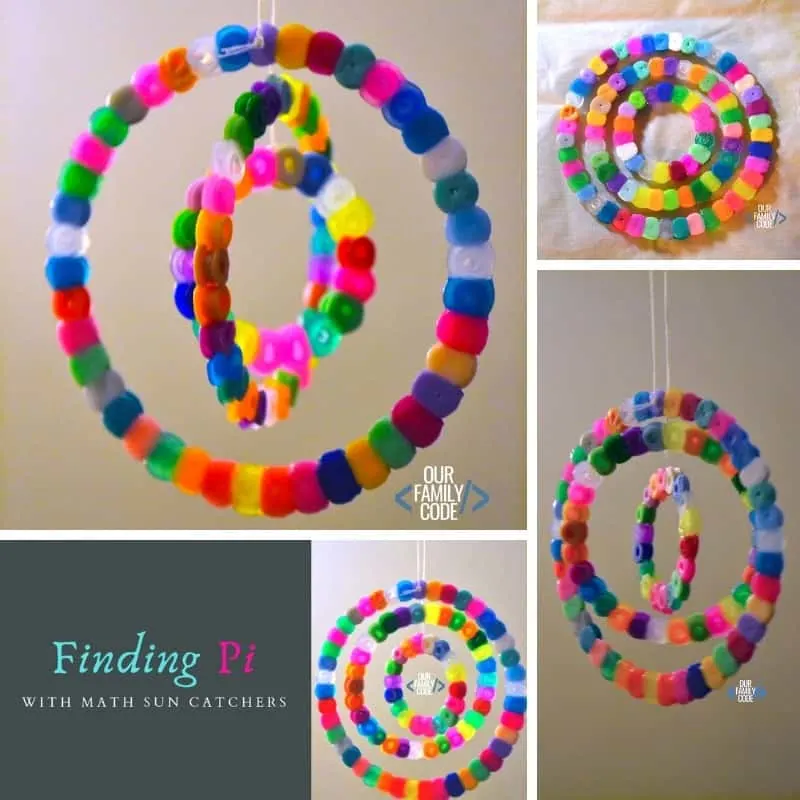
3.1415926535 8979323846 2643383279 5028841971 6939937510 5820974944 5923078164 0628620899 8628034825 3421170679
Pi is the ratio of the circumference of any circle to the diameter of that circle. The approximate value of Pi is 3.14.
Archimedes of Syracuse was the first person to calculate Pi.
Pi is an irrational number and has no final digit.
More Math + Art Activities
Our friend Karyn from Teach Beside Me just published an excellent math art book, Math Art and Drawing Games for Kids. This book is filled with tons of incredible ideas to learn math through art and is great for both teachers and homeschoolers. You can purchase a copy by clicking the image below!!
Remember to follow us on Facebook and Instagram to stay connected with our latest STEAM activities for kids!
PIN THIS IMAGE TO SAVE THIS MATH SUN CATCHER ACTIVITY!
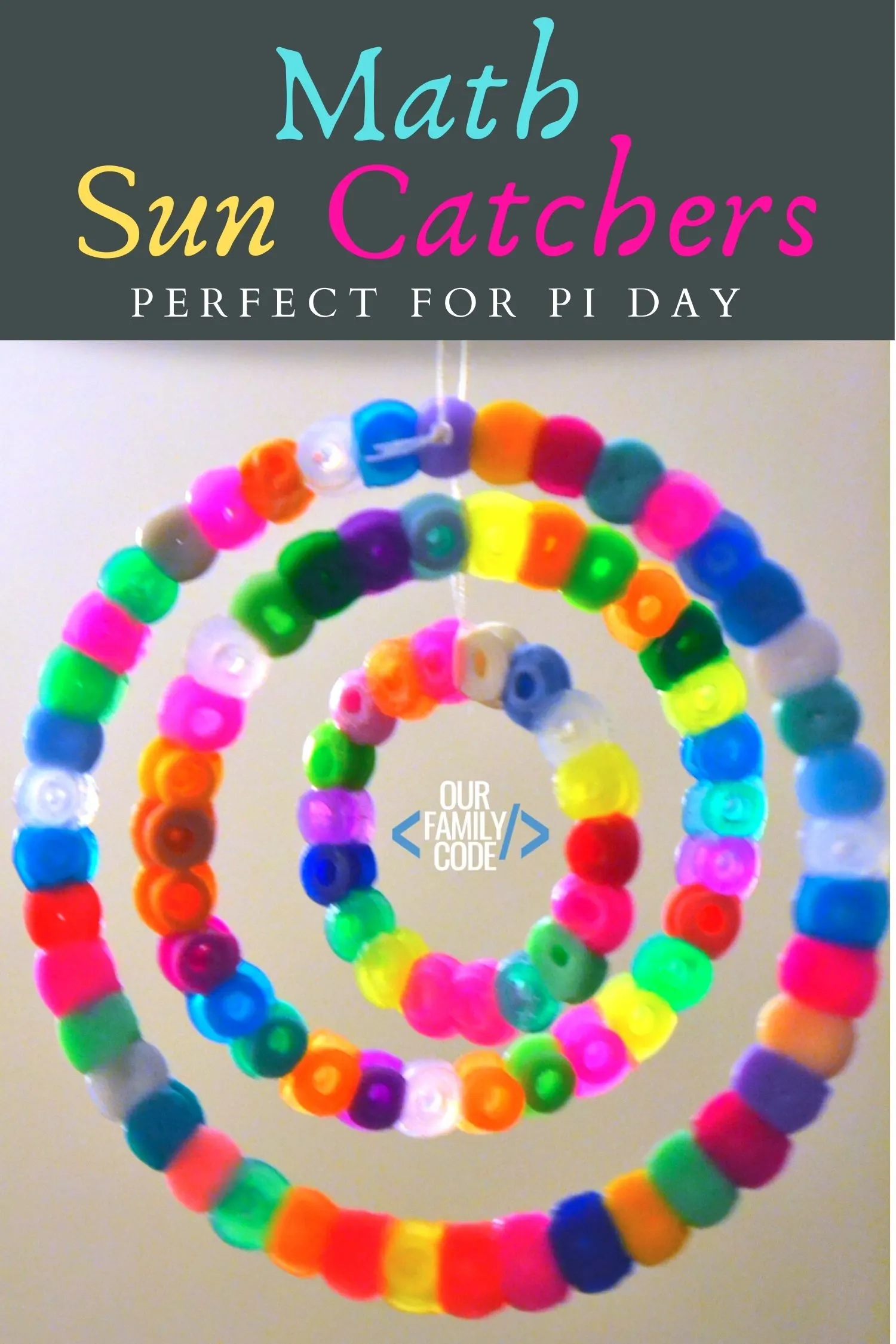
Pi Day Activities
Check out these great STEAM Pi Day activities for kids that pair math with technology, art, engineering, and science!
We love to pair math and technology to create fun art! This Pi Necklace coding activity is the perfect combination of math, binary, and hexadecimal coding for upper elementary and middle school students. It’s also an engaging Pi Day activity!
Learn the first 100 digits of Pi with this color wheel activity that helps kids to visualize numbers of Pi in the first 100 digits and learn about color wheels!
We love math and art activities! We work with pixel puzzles and mosaic squares quite a bit in our house and decided to use turn a skyline activity into a color coding mosaic pi cityscape activity that works on basic programming skills while introducing Pi.
This circle algorithm art activity introduces basic coding skills by giving kids a set of rules and steps to follow to create unique designs in each circle! An algorithm is a set of specific steps that you can follow to solve a problem. One way to teach your children about algorithms and unplugged coding is to have them create algorithm art drawings.
We love any reason to geek out and Pi Day is one of our favorite days to enjoy some math and art activities! From coding Pi necklaces to creating Pi mosaic cityscapes, we try to do a range of projects in our house so that each of our kids can geek out with us! This watercolor compass art activity is perfect for a wide range of ages and learning levels
This math + art + technology activity is designed to show how JavaScript programs can be used to make drawings and introduce kids to the coordinate system used.
Meet Toni, the Maker Mom behind Our Family Code

Hey there, I’m Toni! I’m a software engineer and Maker Mom that finds my joy in unleashing my children’s curiosity by exploring STEAM concepts with my fantastic five!
When I’m not chasing toddlers or raising tweens, you can find me tearing things up and putting them back together over here at Our Family Code.
I am the owner and content creator of multiple educational websites designed to increase access to STEAM & STEM education with a focus on teaching computer science and coding to kids of all ages!
You can also find out more about me by visiting ToniGardner.com!
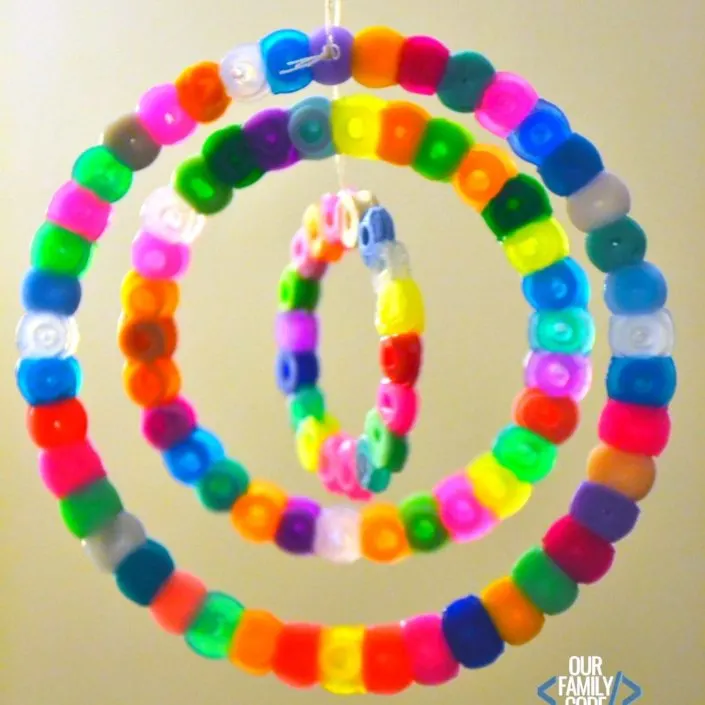
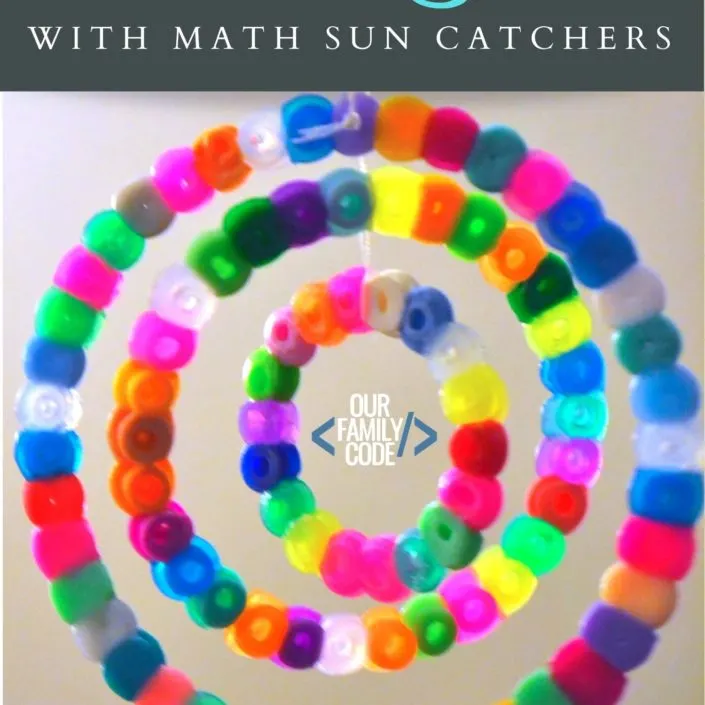

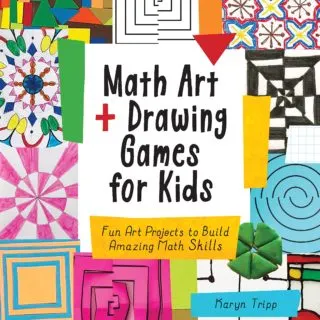

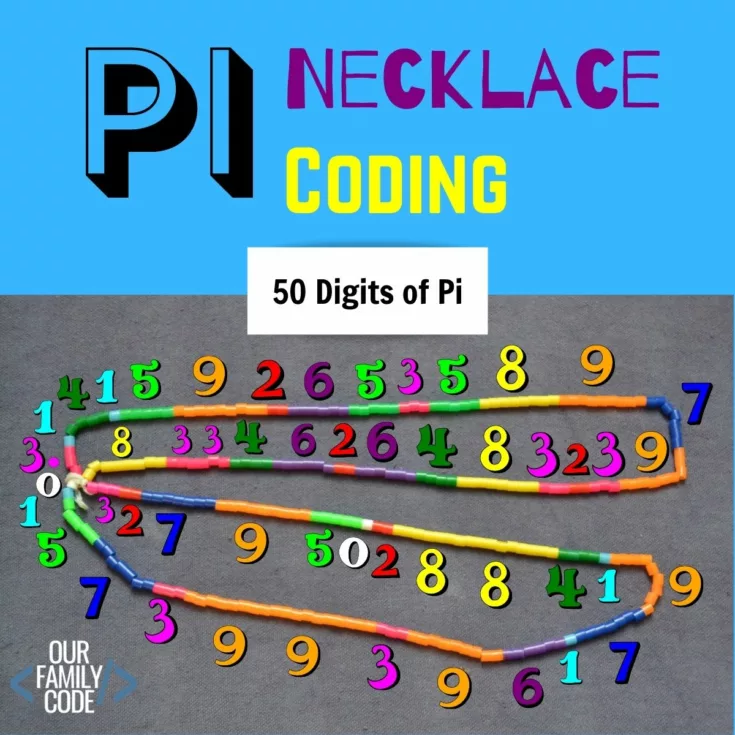
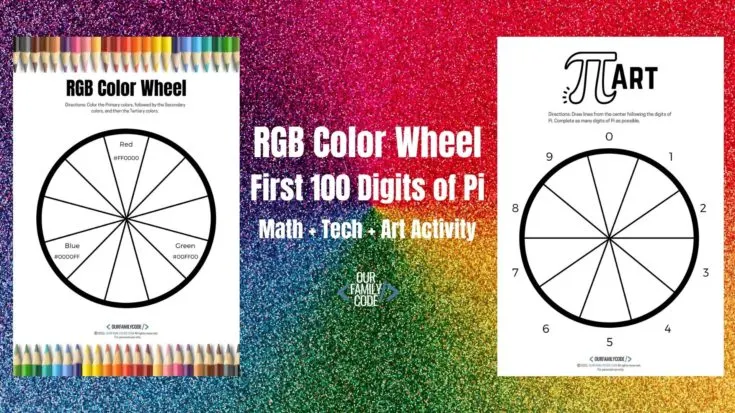
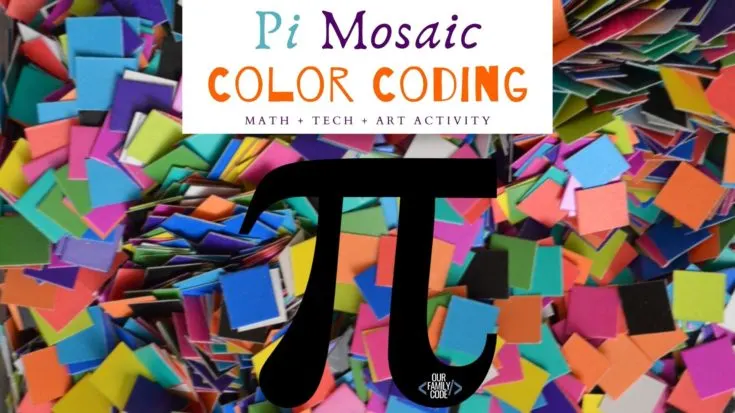

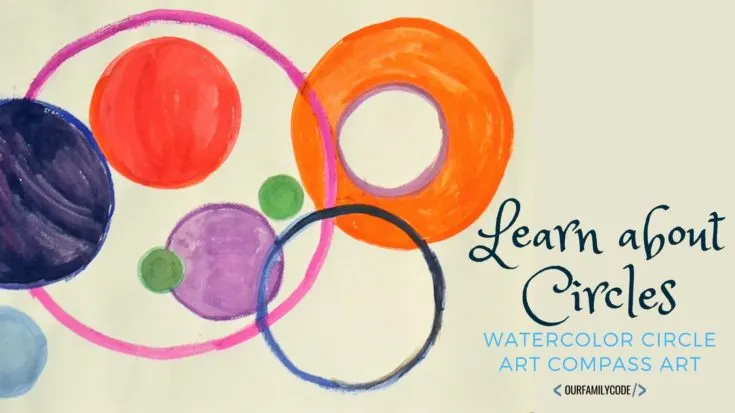
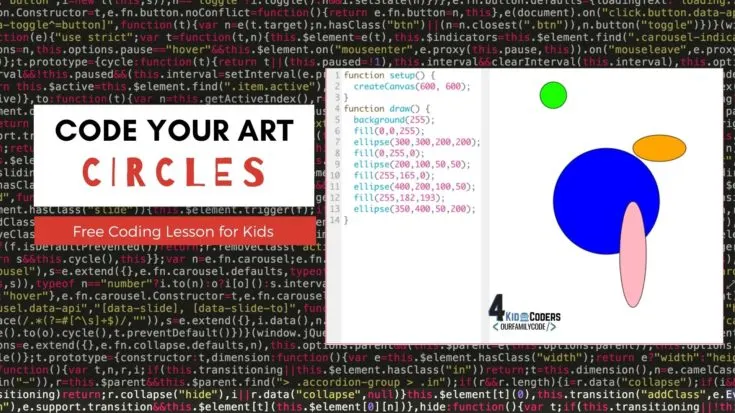






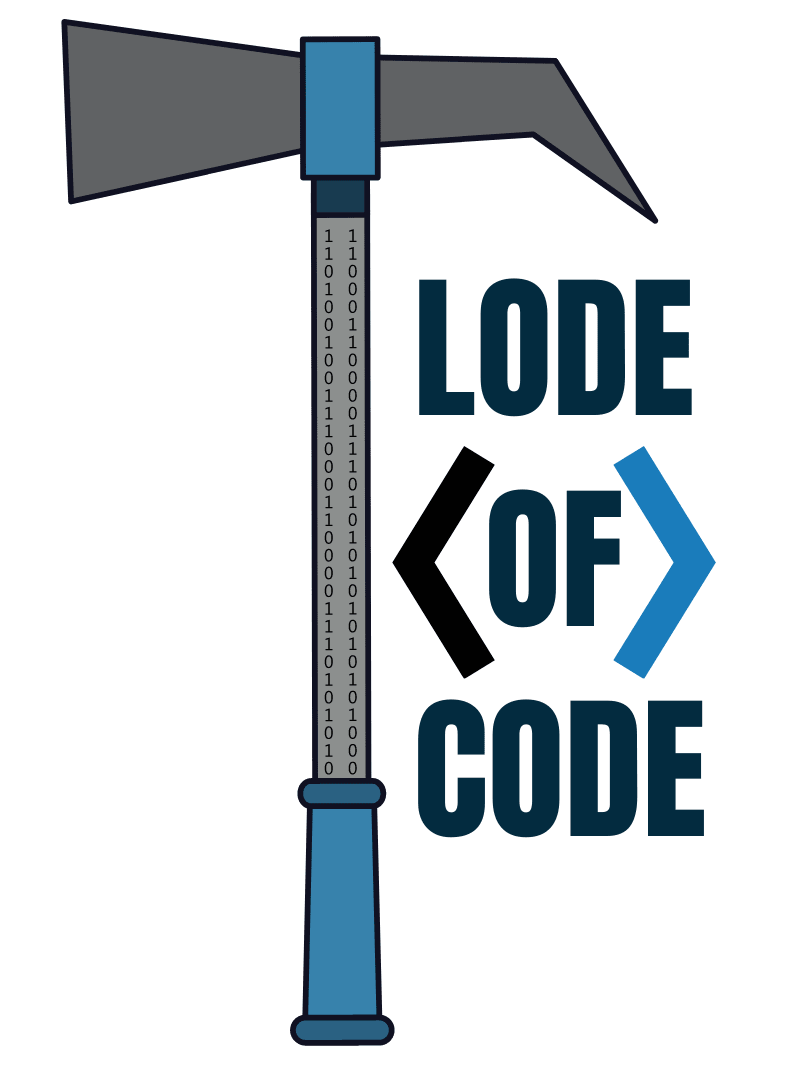
Karyn
Thursday 14th of November 2019
These are so fun! My kids would love making them.